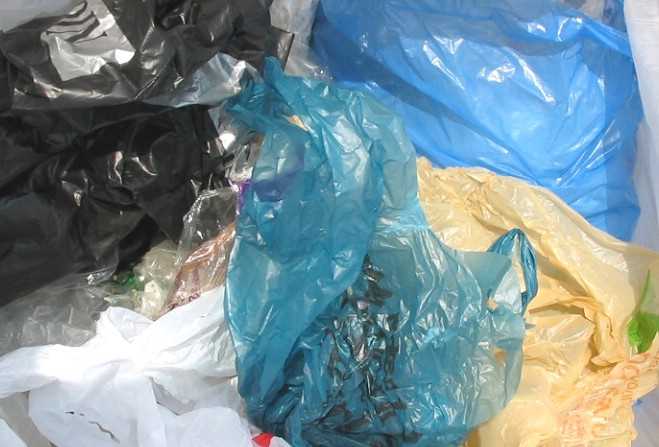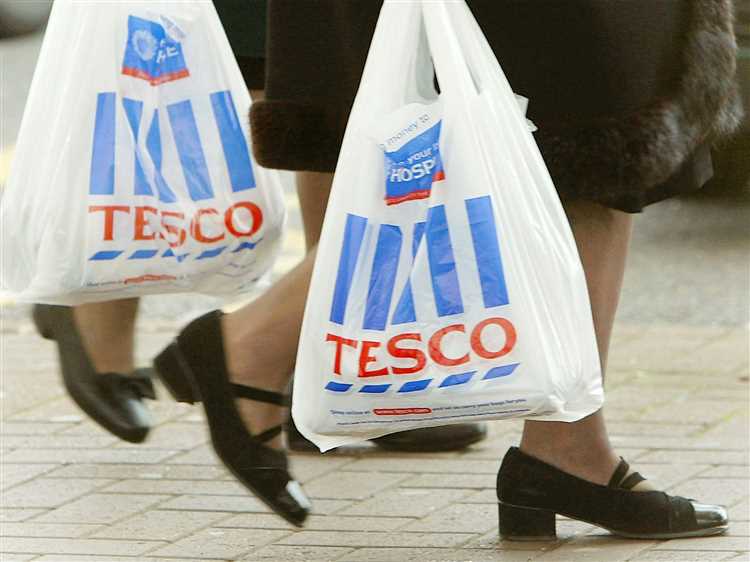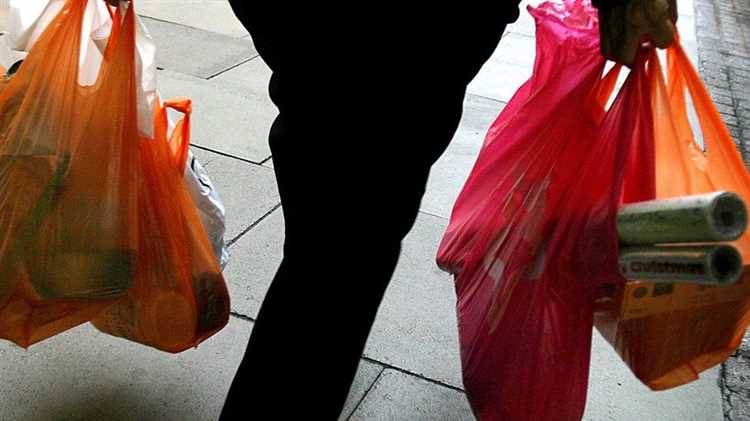
Plastic bag money refers to the fees or taxes imposed on plastic bags in many countries around the world. These charges are meant to discourage the use of single-use plastic bags and promote more sustainable alternatives. But how is the money collected from these charges actually used?
In most cases, the revenue generated from plastic bag charges is used for environmental purposes. Governments typically allocate these funds towards initiatives such as plastic waste management, recycling programs, and environmental education campaigns. The goal is to invest the money earned from plastic bag fees into projects that can help mitigate the negative impact of plastic bags on our environment.
The exact allocation of plastic bag money varies from country to country, and even within different regions of the same country. Some governments choose to use the funds exclusively for environmental causes, while others may allocate a portion of the revenue towards other public services or infrastructure development.
Regardless of the specific allocation, the primary aim of plastic bag charges is to encourage behavioral change and reduce plastic bag usage. By introducing financial incentives, governments hope to motivate individuals and businesses to adopt more sustainable practices, such as using reusable bags or opting for biodegradable alternatives.
- Benefits of using plastic bag money
- 1. Encourages the use of reusable bags
- 2. Reduces plastic waste
- 3. Generates revenue for environmental initiatives
- Supporting environmental initiatives
- Funding education and research
- Promoting waste reduction and recycling
- Investing in sustainable development projects
- Example: Investing in renewable energy
- Example: Supporting organic farming
- Improving infrastructure and waste management systems
- Investing in recycling facilities
- Enhancing waste treatment plants
- Creating awareness and educating the public
- Raising awareness
- Educating the public
- Q&A,
- Why is there a fee for plastic bags?
- What happens to the money collected from the plastic bag fee?
- Who decides how the money from the plastic bag fee is spent?
- Can businesses keep the money collected from the plastic bag fee?
- Are there any restrictions on how the money from the plastic bag fee can be used?
Benefits of using plastic bag money
Implementing a plastic bag money policy can have several benefits for communities and the environment:
1. Encourages the use of reusable bags
The introduction of plastic bag money incentivizes individuals to bring their own reusable bags when shopping, reducing the demand for single-use plastic bags. Reusable bags are sturdier, more durable, and can be used multiple times, thus contributing to waste reduction.
2. Reduces plastic waste
By charging a fee for plastic bags, more people will choose to opt-out and use alternative options such as reusable bags. This, in turn, reduces the consumption and disposal of single-use plastic bags, minimizing plastic waste and its environmental impact.
3. Generates revenue for environmental initiatives
The funds collected through plastic bag money can be directed towards environmental initiatives such as waste management, recycling programs, or education campaigns about the impacts of plastic pollution. This revenue can help fund projects that aim to conserve natural resources, protect wildlife, and restore ecosystems.
In conclusion, the implementation of plastic bag money can bring forth positive changes by promoting the use of reusable bags, reducing plastic waste, and generating revenue for environmental initiatives. This policy proves to be a step forward in building a sustainable and eco-friendly future.
Supporting environmental initiatives
Plastic bag money is often used to support various environmental initiatives. These include programs aimed at reducing plastic waste, promoting recycling, and supporting sustainable practices.
Funds generated from plastic bag fees or taxes can be used to implement and enforce regulations and policies that encourage the reduction of plastic bag usage. This can include campaigns to raise awareness about the environmental impact of plastic bags and the importance of using reusable alternatives.
In addition, the money collected from plastic bag fees can be invested in recycling infrastructure and education programs. This can help communities improve their recycling rates and reduce the amount of plastic ending up in landfills or oceans.
Furthermore, plastic bag money can be used to support sustainable practices, such as the development of biodegradable or compostable packaging alternatives. These initiatives aim to reduce the overall environmental footprint of packaging materials and promote more environmentally friendly options.
Overall, the use of plastic bag money to support environmental initiatives is crucial in creating a more sustainable future. By investing in programs that promote recycling, reduce plastic waste, and support sustainable practices, we can mitigate the negative impact of plastic bags on our environment.
Funding education and research
The money collected from plastic bag fees is often used to fund education and research initiatives.
One common use of the funds is to support environmental education programs in schools. These programs teach students about the environmental impact of plastic bags and the importance of reducing plastic waste. They may include workshops, field trips, and other hands-on activities to engage students in learning about sustainability.
In addition to education, some of the funds are allocated towards research efforts focused on finding alternatives to plastic bags and understanding their effects on the environment. This research can help develop and improve sustainable packaging solutions that have a reduced environmental impact.
By using the money collected from plastic bag fees to fund education and research, communities can take proactive steps towards raising awareness about plastic pollution and finding sustainable solutions. This approach ensures that future generations are equipped with the knowledge and tools needed to make more informed and environmentally conscious choices.
Promoting waste reduction and recycling
The use of plastic bag money is often dedicated to promoting waste reduction and recycling efforts. This includes funding educational programs, public awareness campaigns, and infrastructure for waste management and recycling facilities.
One common way that plastic bag money is used is through educational programs targeted at both children and adults. These programs aim to raise awareness about the environmental impact of plastic bags and the importance of reducing waste and recycling. They often involve interactive workshops, school presentations, and community events. By educating the public, these programs encourage individuals to make conscious decisions to reduce their use of plastic bags and adopt more sustainable habits.
In addition to education, plastic bag money also helps fund public awareness campaigns. These campaigns are designed to inform the public about the negative effects of plastic bags on the environment and promote alternative options. They may involve advertisements, social media campaigns, and community outreach events. The goal is to encourage individuals to say no to plastic bags and choose reusable alternatives such as cloth bags or biodegradable options.
Furthermore, part of the plastic bag money is allocated to developing waste management and recycling infrastructure. This includes investments in facilities, equipment, and technology necessary for efficient and effective waste management. By improving recycling capabilities, communities can divert more waste from landfills and reduce their environmental impact. The funds may also support research and development efforts to explore new recycling techniques and materials.
Overall, the use of plastic bag money plays a crucial role in promoting waste reduction and recycling. By investing in education, awareness campaigns, and infrastructure, it helps shift behaviors towards more sustainable practices and contributes to a cleaner and healthier environment.
| Benefits of using plastic bag money for waste reduction and recycling: |
|---|
| – Increased public awareness about the environmental impact of plastic bags |
| – Encouragement of sustainable habits and the adoption of reusable alternatives |
| – Improved waste management and recycling infrastructure |
| – Reduction of waste in landfills and environmental impact |
Investing in sustainable development projects
One of the ways in which plastic bag money is used is by investing in sustainable development projects. These projects aim to address environmental and social issues by promoting sustainable practices and supporting communities.
Sustainable development projects can include initiatives such as:
- Investing in renewable energy sources, such as solar or wind power, to reduce reliance on non-renewable fossil fuels.
- Supporting organic farming practices to promote healthier and more sustainable food production.
- Funding projects that provide clean drinking water and sanitation facilities to communities in need.
- Promoting eco-tourism and sustainable tourism practices that focus on preserving natural resources and supporting local communities.
- Investing in research and development of sustainable technologies and innovations.
These projects play a crucial role in mitigating the negative impacts of plastic bags on the environment and society. By using the funds generated from plastic bag purchases, businesses and governments can contribute to positive change and create a more sustainable future.
Example: Investing in renewable energy
One specific project that can be funded using plastic bag money is the installation of solar panels in public buildings. Solar panels harness the power of the sun to generate electricity, which can then be used to power buildings and reduce the reliance on fossil fuel-generated electricity. This not only reduces carbon emissions but also saves money on energy bills in the long run. By investing in renewable energy projects like this, plastic bag money can contribute to a cleaner and more sustainable energy future.
Example: Supporting organic farming
Another way in which plastic bag money can be used is by supporting organic farming practices. Organic farming avoids the use of synthetic chemicals and promotes biodiversity, soil health, and animal welfare. By providing funding and support to organic farmers, plastic bag money can help promote sustainable agriculture and reduce the negative environmental and health effects of conventional farming methods.
| Investment | Focus |
|---|---|
| Renewable energy | Reducing reliance on fossil fuels |
| Organic farming | Promoting sustainable agriculture |
| Clean water and sanitation | Improving access to basic needs |
| Eco-tourism | Preserving natural resources, supporting local communities |
| Sustainable technologies | Fostering innovation for a sustainable future |
Improving infrastructure and waste management systems

The plastic bag money collected can be used to improve infrastructure and waste management systems. This includes investing in recycling facilities, waste treatment plants, and waste collection services.
Investing in recycling facilities
One way to utilize the plastic bag money is to invest in recycling facilities. These facilities can help process and transform the collected plastic bags into new products. The funds can be used to upgrade existing facilities or build new ones, allowing for greater efficiency and capacity to handle the plastic waste.
Enhancing waste treatment plants
Another important aspect is enhancing waste treatment plants. With the plastic bag money, these plants can be upgraded to handle the increased volume of waste generated from the collection efforts. New technologies and equipment can be installed to ensure proper waste disposal and minimize environmental impact.
The funds can also be used to implement innovative waste management solutions, such as waste-to-energy plants, where plastic bags can be utilized as a source of renewable energy. This helps reduce reliance on fossil fuels and contributes to sustainable development.
| Improvements | Benefits |
|---|---|
| Upgrading recycling facilities | Increased capacity to process plastic waste and create new products |
| Enhancing waste treatment plants | Proper disposal of waste and reduced environmental impact |
| Implementing waste-to-energy plants | Utilizing plastic bags as a renewable energy source |
In conclusion, the plastic bag money can be used to improve infrastructure and waste management systems, leading to more sustainable practices and a healthier environment. By investing in recycling facilities, enhancing waste treatment plants, and exploring innovative solutions, the impact of plastic bags on the environment can be minimized.
Creating awareness and educating the public
One of the main uses of plastic bag money is to create awareness and educate the public about the environmental impacts of plastic bags and the importance of reducing their usage.
Raising awareness
Plastic bag money is often used to fund campaigns and initiatives that aim to raise awareness about the negative effects of plastic bags on the environment. This includes organizing events, distributing informational materials, and running public awareness campaigns through various media channels.
Through these efforts, the public is informed about the consequences of plastic bag usage, such as pollution, harm to wildlife, and the contribution to climate change. People are made aware that the convenience of plastic bags comes at a high cost to the environment.
Educating the public

Another important use of plastic bag money is to educate the public about alternatives to plastic bags and promote sustainable practices. Schools, community organizations, and government agencies often use this funding to create educational materials and conduct workshops or training sessions.
These educational initiatives aim to provide information on reusable bags, how to reduce plastic bag consumption, and the importance of recycling. By equipping the public with knowledge and skills, plastic bag money helps to empower individuals and communities to make more environmentally-conscious choices.
Overall, creating awareness and educating the public about plastic bag issues is crucial in order to drive behavior change and achieve a significant reduction in plastic bag usage.
Q&A,
Why is there a fee for plastic bags?
The fee for plastic bags is intended to discourage their use and reduce plastic waste. It serves as an incentive for people to bring their own reusable bags when they go shopping.
What happens to the money collected from the plastic bag fee?
The money collected from the plastic bag fee is typically used for environmental initiatives and initiatives to reduce waste. It can be used to fund recycling programs, clean-up projects, or education campaigns about the harmful effects of plastic on the environment.
Who decides how the money from the plastic bag fee is spent?
The decision on how to spend the money collected from the plastic bag fee is typically made by the government or the organization responsible for implementing the fee. This can vary depending on the country or region.
Can businesses keep the money collected from the plastic bag fee?
In some cases, businesses may be allowed to keep a portion of the money collected from the plastic bag fee to cover administrative costs. However, the majority of the funds are usually used for environmental initiatives.
Are there any restrictions on how the money from the plastic bag fee can be used?
There may be specific guidelines or regulations on how the money from the plastic bag fee can be used. For example, it may be required to be used for environmental purposes or waste reduction initiatives. The funds may also be audited to ensure transparency and accountability in their use.
